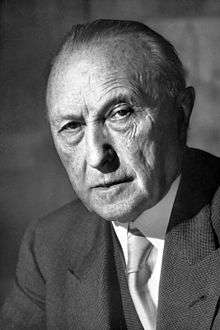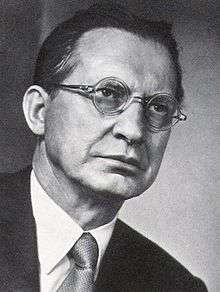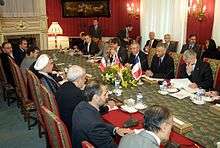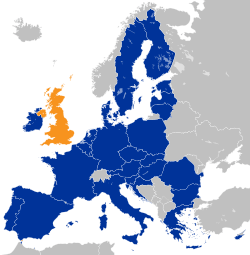EU three



The EU three, also known as EU big three or EU trio refers to: Germany, France and Italy, a group that consists of the three large founding members of the European Union;[1][2][3] or France, Germany, and the United Kingdom, a group of countries who used to wield most influence within the European Union, especially during the negotiations with Iran.[4][5][6]
E3 + 3


In 2003, France, Germany and the UK launched negotiations attempting to limit the Iranian nuclear program, which led to the Tehran Declaration of 21 October 2003 and the voluntary Paris Agreement of 15 November 2004.[7][8][9]
"EU 3 + 3", more commonly referred to as the "E3+3",[10] refers to a grouping which includes the EU-3 and China, Russia, and the United States. It was coined when these states joined the EU diplomatic efforts with Iran in 2006. In the United States and Russia, it is more commonly known as P5+1, which refers to the five permanent members of the UN Security Council plus Germany.[11]
"E3/EU+3"[12]) refers to a grouping of the "E3+3" plus an EU representative, namely: China, France, Germany, the Russian Federation, the United Kingdom and the United States, with the High Representative of the European Union for Foreign Affairs and Security Policy.[13]
Following the 2004 enlargement of the European Union, the EU-3 group had a declining influence in the European Union other than in negotiations with Iran, and has acted more often within the G6.[14]
Post-Brexit referendum
Determined to keep the project intact in the wake of the UK’s vote to leave the European Union in 2016, France, Germany and Italy re-emerged as the "Big Three" and called for greater integration in various trilateral summits in Berlin, Paris and Ventotene.[15][16][17]
| EU Big Three | |||||||||||
|---|---|---|---|---|---|---|---|---|---|---|---|
| Country | population | votes in the Council | Contribution to EU budget in Euro | MEPs | NATO Quint | G7/G8/G20 | P5 | G4 nations | Uniting for Consensus | ||
| |
66,616,416 | 29 | 8.4% | 17,303,107,859 | 16.44% | 74 | |||||
| |
80,716,000 | 29 | 8.4% | 22,218,438,941 | 21.11% | 96 | |||||
| |
60,782,668 | 29 | 8.4% | 14,359,479,157 | 13.64% | 73 | |||||
See also
| Part of a series of articles on the |
| United Kingdom in the European Union |
|---|
 |
|
Membership
Legislation |
|
References
- ↑
- ↑
- ↑
- ↑ Bretherton, Charlotte; John Vogler (2006). The European Union as a Global Actor. Routledge. p. 174. ISBN 9780415282451.
- ↑
- ↑
- ↑ Peter Crail, Maria Lorenzo Sobrado (1 December 2004). "IAEA Board Welcomes EU-Iran Agreement: Is Iran Providing Assurances or Merely Providing Amusement?". NTI. Retrieved 3 April 2015.
- ↑ Kjell Engelbrekt, Jan Hallenberg (2010). European Union and Strategy: An Emerging Actor. Routledge. pp. 94–97. ISBN 9781134106790. Retrieved 3 April 2015.
- ↑ Joachim Koops, Gjovalin Macaj (2014). The European Union as a Diplomatic Actor. Palgrave Macmillan. ISBN 9781137356864. Retrieved 3 April 2015.
- ↑ "Nuclear talks between Iran and E3+3 to continue in November". Foreign & Commonwealth Office. 16 October 2013. Retrieved 8 November 2013.
- ↑ http://blog.foreignpolicy.com/posts/2009/09/30/p51_or_e33
- ↑ "E3/EU+3". Delegation of the European Union to the United States of America. Retrieved 5 April 2015.
- ↑ "Information Note on EU sanctions to be lifted under the Joint Comprehensive Plan of Action (JCPOA)" (PDF). European Union. 23 January 2016. Retrieved 21 May 2016.
- ↑ Strategic Vision: America & the Crisis of Global Power, Dr. Zbigniew Brzezinski, pp 43-45. ISBN 9780465029556. Published 2012.
- ↑
- ↑
- ↑
External links
- EU calls for UN action over Iran, BBC News, 12 January 2006
- Kaveh L Afrasiabi (1 Apr 2006). "Iran: Options for a face-saving solution". Asia Times. Retrieved 2009-06-17.